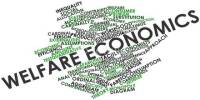A circular economy is a systemic approach to economic development designed to benefit businesses, society, and the environment. It is also referred to as “circularity”, is an economic system aimed at eliminating waste and the continual use of resources. In contrast to the ‘take-make-waste’ linear model, a circular economy is regenerative by design and aims to gradually decouple growth from the consumption of finite resources.
A Circular Economy is an economy that is restorative and regenerative by design. It entails a radical change in perspective by people and companies when it comes to dealing with the lack of resources, environmental impact, value creation, and employment.
The circular economy takes production processes into consideration and outlines how to reuse, repair, and recycle items, thus increasing sustainable manufacturing and consumption. Circular systems employ reuse, sharing, repair, refurbishment, remanufacturing, and recycling to create a closed-loop system, minimizing the use of resource inputs and the creation of waste, pollution, and carbon emissions. Circular systems make effective use of bio-based materials by encouraging many different uses for them as they cycle between the economy and natural systems.

It is based on three principles:
- Design out waste and pollution
- Keep products and materials in use
- Regenerate natural systems.
The circular economy aims to keep products, equipment, and infrastructure in use for longer, thus improving the productivity of these resources. The concept recognizes the importance of the economy needing to work effectively at all scales – for big and small businesses, for organizations and individuals, globally and locally. Moreover, it targets to rebuild all available types of capital, including financial, human, social, and natural.
A circular economy reveals and designs out the negative impacts of economic activity that cause damage to human health and natural systems. Waste materials and energy should become input for other processes: either a component or recovered resource for another industrial process or as regenerative resources for nature (e.g., compost). This includes the release of greenhouse gases and hazardous substances, the pollution of air, land, and water, as well as structural waste such as traffic congestion. This regenerative approach is in contrast to the traditional linear economy, which has a “take, make, dispose” model of production. Essentially, a circular economy describes a regenerative economic system.
Information Source:
















